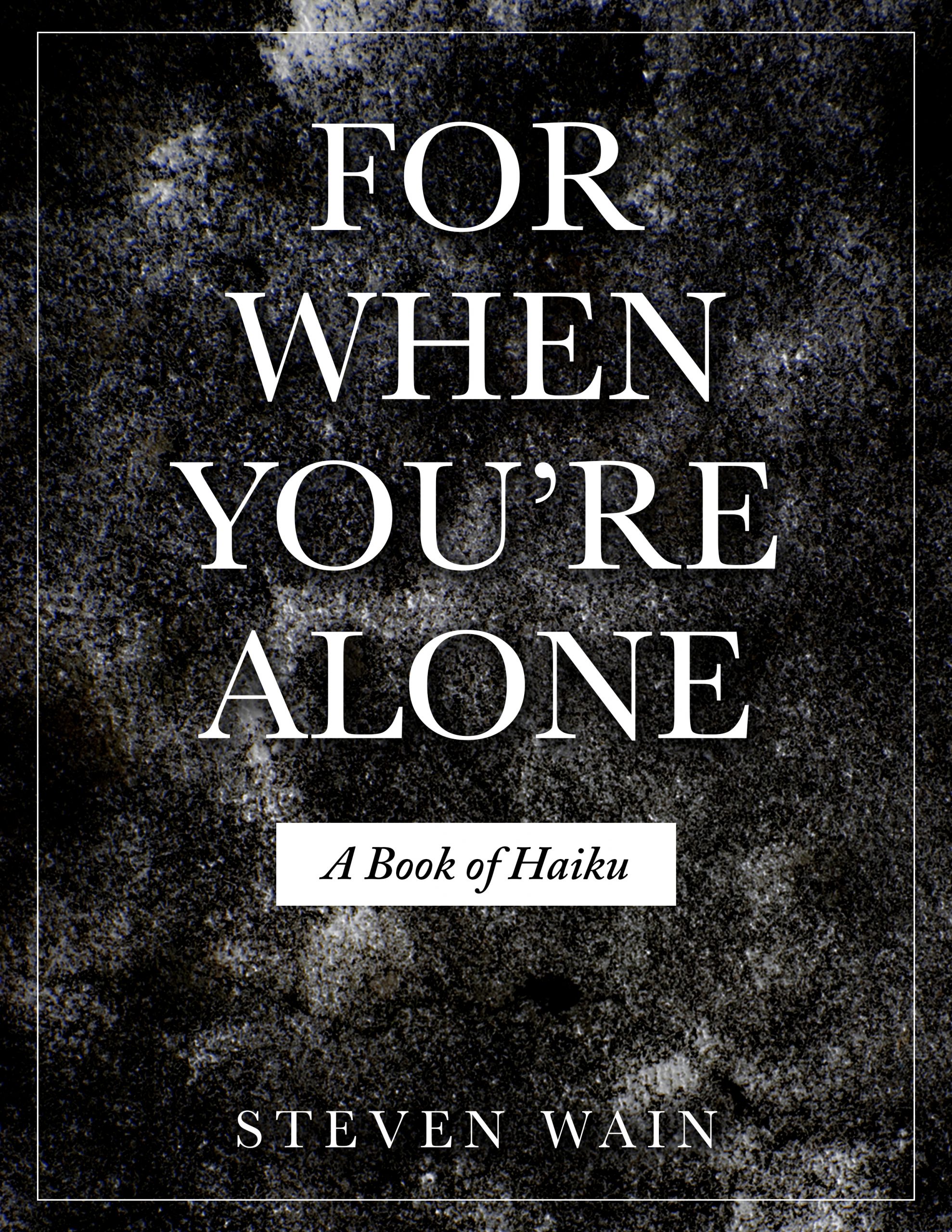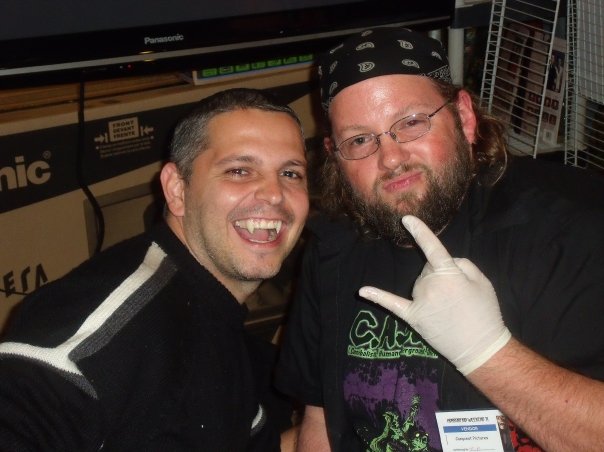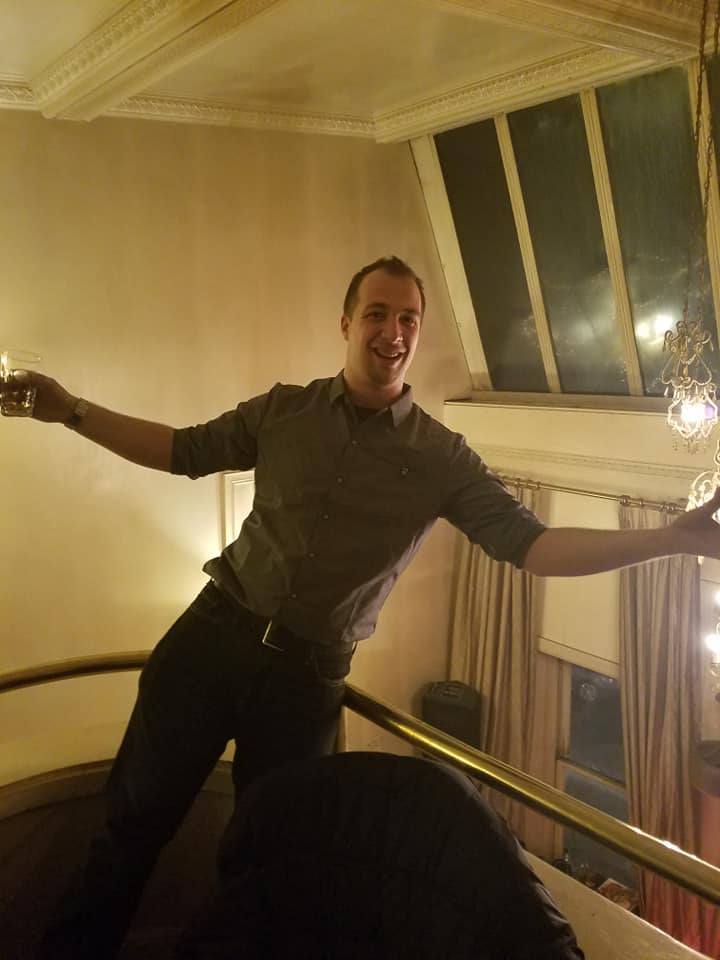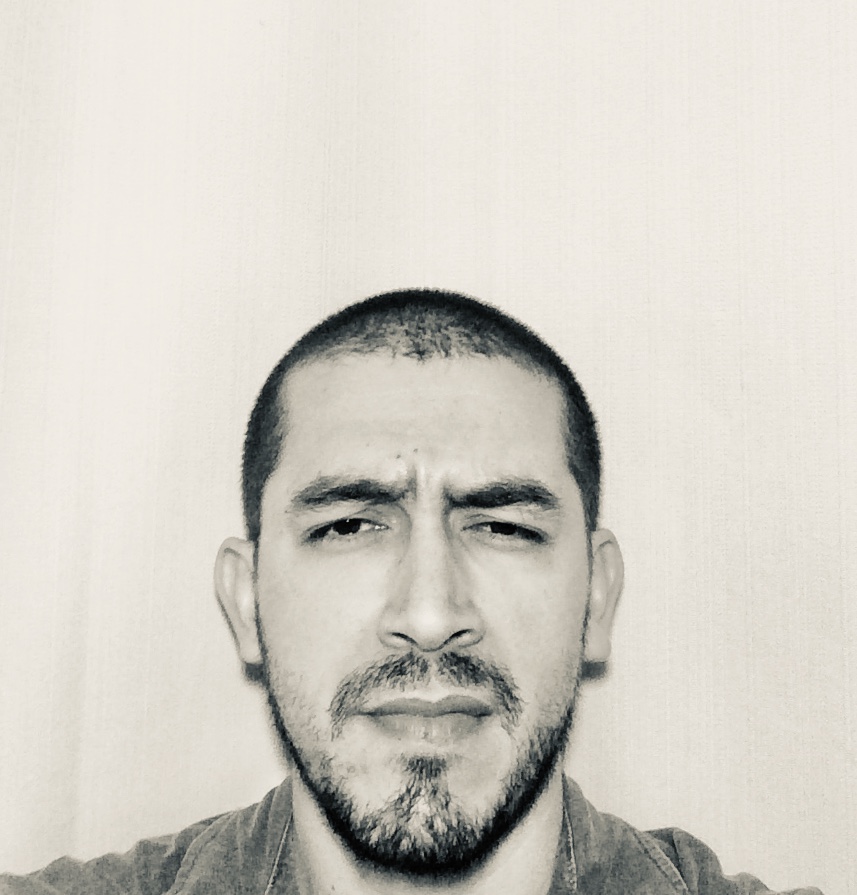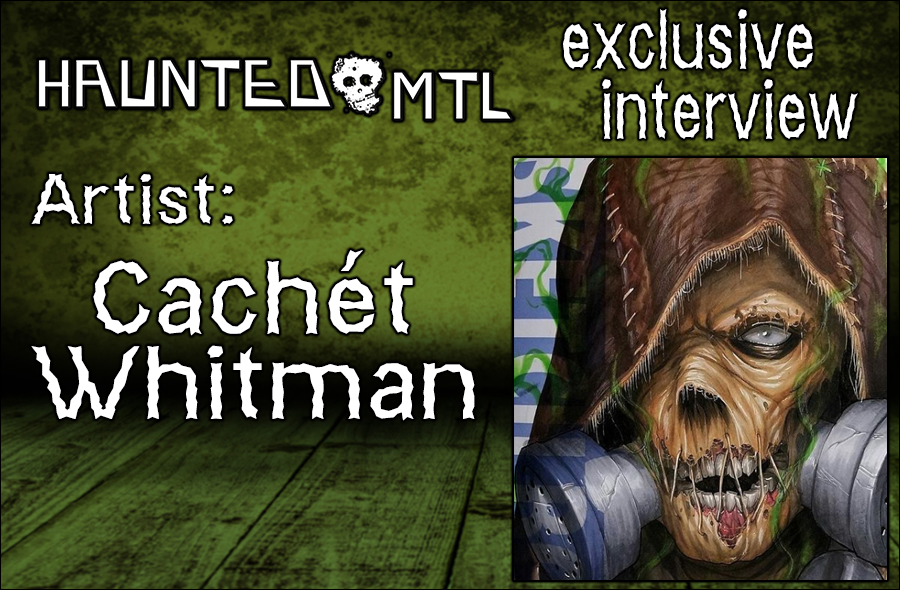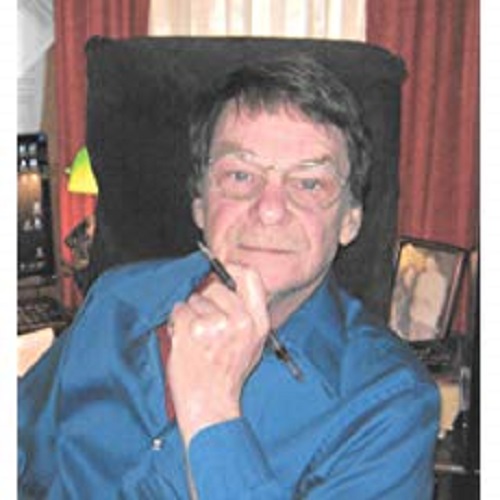
Interview: Horror/Sci-Fi Author T.A. Bradley
More Videos
Published
4 years agoon
By
PARZZ1VAL
Haunted Houses and Vampires go to terrifying depths in Thomas A. Bradley’s fiction. Reading along the line of Dean Koontz, his words are meant to take you so far into the story, you’ll forget you’re even reading. Follow along to learn about the Sci-Fi/Horror novelist and his accomplishments.
With all the creative outlets available to you, why write?
“Well, there’s always the likelihood of becoming rich. Haha.
“I suppose I write because I love the process and the challenge. I’d been writing stories since I was little, though nothing ever came of any of that. It wasn’t really serious writing. I’ve always had a very good and vivid imagination – an excellent asset. Writing allows me to create adventures, albeit dark ones in my particular genre, which take the readers to places and spaces they can’t find on maps (though I often do use real locations as either a main setting or as background periphery).
“I mentioned a challenge. To do my job correctly, I need to use, not just the right words and phrases, but the best, words and phrases in the best order so that the reader no longer realizes she’s reading. Another challenge, one faced by all writers of fiction, particularly science fiction and horror fiction, is to make the incredulous as acceptable as finding a bottle of milk in the fridge. Not an inconsiderable task. When I meet these challenges and succeed, I can draw the reader out of his chair and into a dimension of the surreal that I’ve created. I will open the box in her brain that hides the fear and set it loose to run rampant for 300 or more pages before safely returning it and him back to his normal world. To be able to do that is an awesome power.
“So…What could be more fun than that?
“A reader once told me that while reading one of my novels: “I was in the cemetery fighting with them.” That’s why I write. There isn’t a better compliment to be had about a story you’ve written or a better feeling about what you’ve accomplished.”
Why Horror?
“Why Horror is a difficult question to answer. It is something that I’ve just been drawn to all my life. Starting way back when with the advent of the first B-movies with Vincent Price and Boris Karloff and Christopher Lee, I fell in love with the idea of the supernatural. Those themes and movies provided an outlet for allowing yourself to be scared, if only temporarily, by things you knew could never really exist or ever really hurt you.
“Understand, I grew up in the era of civil unrest, race riots, and Vietnam. Those were real things to be afraid of. So, for whatever reason, I latched onto the horror that only existed in the novelist’s or screenwriter’s mind. And eventually, I wanted to keep that outlet going for everyone else who enjoyed the same. The bottom line is – it’s what’s inside me, so that’s what I write.”
Tell us about your writing process.
“The physical process is pretty straight forward. I’m in my office and at my computer by 7:30 every morning and work until lunchtime – usually between 11 and 12. By 1 P.M. I’m back to work until 4:30 or 5:00, depending on how the work is flowing. The mental and creative processes are a lot more convoluted.
“As a story unfolds, I allow the characters and action to drive it. I begin with a premise and set everything in motion. One action or scene usually dictates what’s necessary or wanted in the following scenes. When I reach a certain point, usually somewhere at or just beyond what I would consider the middle of the work, I’ll stop and outline the ending so I know where I’m going to ensure I have no plot holes and/or discrepancies in what has come before. In effect, I fire my characters and remove the “control” I’d given them to begin with. (Note: They can be stubborn buggers, and do not always accept being let go, and sometimes continue to give me trouble).
“This method works well for me but is certainly not without its headaches and drawbacks. There have been multiple occasions in which my characters (I’ll blame them) have written me into corners, necessitating going back and re-writing major parts while trying to keep the timeline intact. (Keeping the timeline intact is one of the hardest things to do during re-writes, especially if the story is being told strictly chronologically – meaning one day follows the next without jumps in weeks or months). It is not unusual for me to have 20 – 30 drafts before a novel is completed and ready to begin the real editing. As an example, my novel The Covenant of Wickersham Hollow had 46 drafts before it finally reached the final edit and publication stage. It began with the title: Witch Hill, which had a single draft and eventually morphed into: The Taking of Annabel’s Soul. That iteration had 23 drafts before being reworked and finally renamed The Covenant of Wickersham Hollow, which had 22 drafts before reaching final edit and eventual publication under that title.”
Which piece are you most proud of, and why?
“There are actually two of my five published novels of which I’m most proud, each for different reasons. The first is The Shadow Demon. This novel is very loosely based on the Native American Lenape Lenni culture. The research that went into it was extremely interesting and informative. Being a bit of an introvert, I mustered my courage and reached out to Chief Bob Ruth, who, to my surprise, as I am virtually an unknown author, graciously and patiently answered all my questions throughout a series of interviews. It was a fantastic experience and journey, and I believe it’s one of my best novels. The other novel I’m proud of is the aforementioned The Covenant of Wickersham Hollow. I think this is my best-constructed novel. It moves seamlessly back and forth between past and present as each twist and turn and mystery is revealed. It challenged me on a number of levels and was without a doubt the most complicated novel, in terms of timing and storyline, that I’ve ever written.
“There are actually two of my five published novels of which I’m most proud, each for different reasons. The first is The Shadow Demon. This novel is very loosely based on the Native American Lenape Lenni culture. The research that went into it was extremely interesting and informative. Being a bit of an introvert, I mustered my courage and reached out to Chief Bob Ruth, who, to my surprise, as I am virtually an unknown author, graciously and patiently answered all my questions throughout a series of interviews. It was a fantastic experience and journey, and I believe it’s one of my best novels. The other novel I’m proud of is the aforementioned The Covenant of Wickersham Hollow. I think this is my best-constructed novel. It moves seamlessly back and forth between past and present as each twist and turn and mystery is revealed. It challenged me on a number of levels and was without a doubt the most complicated novel, in terms of timing and storyline, that I’ve ever written.”
How Does a story start? An Idea, thought, scenario, etc.?
“A lot of times, a phrase will pop into my mind that I think would make a good title. Then I’ll take some time and ask myself, “What can I do with that? Where could I go with that? That method held true for three of my five novels. Blood Tracks, Primordia, and The Shadow Demon all grew out of the title coming to me first. Blood Tracks, a vampire novel, was a kind of two-for-one. The title not only popped into my little noggin, but so did the opening paragraph, virtually at the same time. It was a consequence of using a character from a previous novel. Because I knew what he had gone through, and where it had led him, the opening paragraph just fell into place. The character in question was Father Gabriel Jacobs from my first novel, Relic of the Damned. He is a priest escaping from himself and the horrible experience of his past. The paragraph ran: He told himself it was the booze. But that was a lie. It was the nightmares – six years of them. It was the goddamned nightmares that had walked him to the bottle – that had held his hand and told him a little nip here and there would make all the demons go away. It was the goddamned nightmares. But he told himself it was the booze.
“The truth is that each novel stems from something different, usually a title, but not exclusively. The title Primordia popped into my head first, and after some thought, the scenario was developed out of my personal experience of having a pacemaker implanted. I asked myself, What would happen if the pacemaker was too good, and resurrected a murder victim?“
List some of your favorite writers or pieces and tell how your work has been influenced by them.
“Gosh, that’s a very difficult question. I’m an avid reader and my tastes run from Shakespeare, through Daniel Keys and Poe and Isaac Asimov all the way up to Robert McCammon, Dean Koontz, and Stephen King.
“Some of my favorite works, in no particular order are: Flowers for Algernon, Swan Song, Stinger, The Shining, ‘Salem’s Lot and The Stand. As far as writing horror goes, I would have to admit that I’ve learned the most from reading King. His character development and the way he weaves a tale have really influenced my writing. So much so, in fact, that if I find myself struggling with a difficult section or new chapter, I’ll grab a King book (any will do) and read for an hour or two before returning to writing. And it almost always helps.
Where can we find your work?
“All of my works can be found here: https://www.amazon.com/T.-A.-Bradley/e/B007XZP09Q as well as on my website: www.thomasabradley.com“
In final notes, “I was born in Pennsylvania and now live in Drexel Hill with my wife and our German shepherd. I served with the Army Medical Corps during Vietnam. I hold a Bachelor’s degree in Microbiology and did my Master’s work in Virology. I have worked for a number of biotech companies as a virologist, some with biodefense contracts with the government.
“My short stories have appeared in magazines, both print and online. Relic of the Damned: The Coming, Part 1 of a two-part novel, achieved finalist status in the 2014 Kindle Review’s Kindle Best Book Awards for horror.
“I am currently at work on a new novella series called The Cleaners. Book 1, The Bones of Sarah Golescu is nearing completion at the time I’m writing this. Think of this series as a kind of Supernatural meets The Man from U.N.C.L.E.“
What do you think of our interview? Who should we interview next? Check out some of our other interviews with Horror Artist John Clayton, or Horror Comic Author Jesse James Baer. Drop us a hint in the comments below or find us at the following places:
- Facebook @Parzz1val
- Twitter @HauntedMTL or @Parzz1V
- Email @ parzz1val@yahoo.com
You may like
Gaming
Interview with Creative Director Michael Highland: Let’s! Revolution! @ PAX
Published
3 days agoon
April 19, 2024
Another game I had the chance to play at PAX East was, Let’s! Revolution!, a Minesweeper-inspired roguelite puzzle game by animation (and now game) studio, BUCK. I talk more about the game itself in another post. Here, I wanted to highlight the conversation I had with Michael Highland, the Creative Director for Let’s! Revolution! and his journey through video game development.
How did you become involved in video game development?
I studied digital media design in college; this was before there were many programs dedicated to game development. After graduating, I self-published a mobile game called Hipster City Cycle with friends. Over the next few years, I slowly got more freelance work as a game designer, and eventually landed a full-time role at thatgamecompany working on the follow-up to their 2012 GOTY Journey. I worked my way up there and was eventually the Lead Designer on Sky: Children of the Light. Working at thatgamecompany opened a lot of doors professionally. I eventually wound up at BUCK, where I saw the opportunity to help establish a new game studio within a very vibrant existing creative culture.
What has been the most challenging aspect of the development process?
Each studio has its own unique issues based on the people involved. There are commonalities like the need to fight feature creep and building consensus around ideas early in the process when all you have is an abstract grey box prototype to react to. At BUCK the biggest challenge has been channeling the abundance of creative energy and talent into a shippable product. There’s a ton of enthusiasm for games within the company, and without clear product-centric goals (who is the target audience, what platform are we releasing on, what’s the marketing strategy), projects have the tendency to spiral out of scope. Another challenge has been building credibility with publishers. BUCK has an amazing pedigree for animation and design, maybe the best in the world, but when we initially pitched ideas to publishers, they all said the same thing: looks great, but until you’ve shipped a game, you’re too high-risk. That’s what led to us self-publishing Let’s! Revolution! Now that we have a well-reviewed game out in the wild, I feel confident we’ll have more luck with publishers.
BUCK primarily has its roots in animation, what led the decision to start branching into video game development?
It started with a general excitement about the medium and a desire among the staff to work on a game. Leadership at BUCK is all about providing the staff with exciting creative opportunities, and getting to work on a game, is, for some, a creative dream come true. And putting BUCK content out in the world is a point of pride and a boost to morale. From a business perspective, the fact we can staff out game projects with the top animation and design talent in the world is a huge advantage. We’re already starting to see new opportunities for the service side of the business based on the success of Let’s! Revolution!
The art, unsurprisingly, is delightful. What were some of the priorities during the character design process and how did those influence the final hero designs?
Our Art Director Emily Suvanvej really led the charge on the look of the game. There are obvious influences like Studio Ghibli, Moebius, and Steven Universe. My shared goal with Emily was to make something together that reflected the diversity of the team’s artistic and lived experiences. The artists put so much love into the character designs and animation, it really shows.
Some of the primary game mechanics take inspiration from Minesweeper, what was the process like to create your own interpretation of those classic mechanics?
This article goes into depth on this topic. The TLDR is that we took a very iterative approach, at each stage trying to identify what was working about the prototype and lean into that. The initial game concept came together relatively quickly in part because our goal for this project was just to finish a game. We just focused on what was good and kept building on it. I wouldn’t say the final game is “perfect” – but we wound up with a much bigger and higher quality experience than I expected by not letting perfectionism get in the way of making good better.
Is there anything else you would like to plug or that you think is important for people to know about Let’s! Revolution! or other upcoming projects?
The music and sound design for the game is stellar. We worked with a creative audio company called Antfood and they knocked it out of the park. The audio got an honorable mention from IGF, which I think is extra impressive because most of the other games were audio-centric titles with some unusual hook to the sound design. For the OST, Antfood reworked all of the music from the game into a continuous flow, like a concept album. It’s so good. I love working with them.
Gaming
Interview with Game Dev Julian Creutz: Quest Master @ PAX
Published
3 weeks agoon
April 4, 2024
As mentioned in previous posts, I had the opportunity to demo a pre-early access version of the game Quest Master alongside the Lead Developer, Julian Creutz. Quest Master is a Legend of Zelda and Super Mario Maker inspired dungeon crawling and building video game. While the other post covers the game itself, this one covers the inspiration and vision for the game as told by Julian.
How did you become involved in video game development?
I’ve been a huge gamer, and especially a Zelda fan, ever since I was a little child when my dad put a GameBoy Advance with “The Legend of Zelda: A Link to the Past” into my hands. Sometime during elementary school I started dabbling with game development using visual tools like Scratch and GameMaker. I quickly got into making Zelda fan games and had dreamt of the day when I would make my own Zelda game one day. Over the years I’ve honed my game development and programming skills, resulting in where I am today.
What has been the most challenging aspect of the development process?
Developing Quest Master is essentially like making two games at once – the making and the playing part. Both of these game elements have to be equally as polished to form a cohesive one.
The most difficult thing by far about the game’s development has been to make the maker mode experience intuitive for first-time users and people who know nothing about Zelda-like games, but at the same time powerful and complex enough to allow creating anything you could dream of.
One good example is the gameplay feature to link certain parts to others, like linking a pressure plate to opening a door. We’ve been through countless iterations affecting both the visual, gameplay and user experience aspects of it – I hope that the one we are using right now is the final one!
Quest Master takes a lot of inspiration from classic dungeon-crawlers like the Legend of Zelda franchise. What about these games was so enchanting to you and how does Quest Master try to capture that enchantment?
As described earlier, I’m like the biggest Zelda fan, which I’m sure shows. My gripe with many Zelda-likes on the market is that none perfectly capture the feel of the classic entries… there’s always something missing.
I confidently believe that Quest Master differs from that greatly. We are trying to make Quest Master feel like an in-house 2D Zelda like Nintendo used to make, just from an indie team like ours. Many people crave the classic 2D entries, just like I do.
What emotions do you hope the player will experience while playing Quest Master? What design choices were made to assist in that desired atmosphere?
A big aspect of Quest Master is its local multiplayer. The game is deliberately designed to work flawlessly with that, and makers can create specialized puzzles in the game that require all players to work together for example. The result is both rewarding, funny, and sometimes infuriating altogether, for example when one of your buddies throws you into a hole.
As a community dungeon maker, what features are you most excited to see implemented in player-made dungeon crawls?
I’ve already been hugely amazed by the creations of the existing Quest Master demo. With all the new features the game will launch into Early Access with, I bet this will be tenfold. I myself always enjoy the brain busting puzzles people come up with. Other things I also like a lot are the unintended mechanics the players find, which dynamically emerge from the many, many gameplay systems working together.
What’s it been like working with Apogee, an indie publisher who goes back to the early 1990’s and has a long legacy of terrific game releases?
I’ve only had very few interactions with game publishers in the past, and Quest Master is my first large scale commercial game project. There’s preconceived notions floating around everywhere on the internet about how evil game publishers are and how much better you would be off self-publishing your game. Contrary to that, working with Apogee has been nothing short of supportive and family-like. They are very invested in the project, and they have many Zelda fans on the team also helps a lot. They are supercharging the potential of Quest Master and without them the game would not be where it is today.
Is there anything else you would like to plug or that you think is important for people to know about Quest Master or other upcoming projects?
Early Access is just the beginning! Quest Master will be hugely expanded upon during its Early Access phase, with many more themes, dungeon parts and entire new gameplay features coming in short intervals and a rapid update schedule. There are always new things around the corner. For example, things like the singleplayer story campaign and the overworld maker will be most likely not be part of the initial Early Access release, but we will make sure to build anticipation by introducing bits and pieces into the world of Quest Master to build up to that.
I hope you are looking forward to it as much as I am!
Interviews
An interview with creator of Kaidankai, Linda Gould
Published
2 years agoon
September 4, 2022
I was fortunate enough to interview Linda Gould about her beautifully eerie podcast, Kaidankai. I hope that you all enjoy getting to know her and her creepy work as much as I did.
Your recent collection is called Unpleasantville, a collection of stories from a singularly creepy town. What inspired this project?
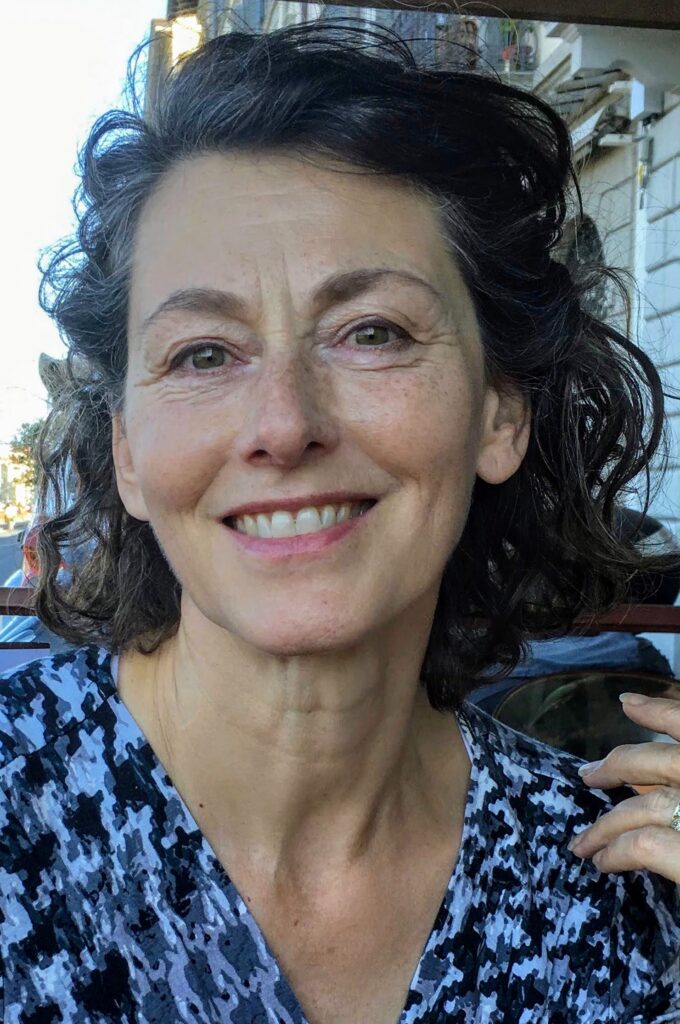
One of the only poems I related to when in high school was Spoon River Anthology (SPA). For those who don’t know it, SPA, it is a collection of poems about life in a small town as told by the ghosts of the residents in that town. The poems were based on real people, and the anthology burst the bubble on the idea that country life was idyllic. I loved its irreverence and was captivated by the idea that ghost stories, which I always loved, could be literary, taught in high school AP English classes! For the Kaidankai, I asked listeners and contributors to pick their favorite poem and read it for me. Then, I did a special presentation of their readings for the podcast. Many people had never heard of SPA and were so happy to find it. So many people, way more than I expected, sent in their readings, and they were just awesome.
That made me wonder what a modern version would look like. Since the Kaidankai audience and contributors are all around the world, I couldn’t pick one place without excluding someone, so I made up a name and a few landmarks that anyone, anywhere could relate to and sent it out to see what would happen.
Unpleasantville is a shared world, with many writers telling their own stories. What was it like, working with so many writers in this shared space?
Well, that describes the Kaidankai podcast in general. People from Asian countries, Australia, North America and throughout Europe contribute. Sometimes, before I reject a story, I have to read it a couple of times to make sure that it isn’t just a different storytelling technique that I don’t understand or relate to. I force myself to explain to myself why a story isn’t a good fit. I’m not sure that I would take that approach if all the stories came from Western writers.
Of course, Unpleasantville is only part of your overall show, Kaidankai. What can you tell us about the show? Where did the name, Kaidankai, come from?
First, I have to tell you how much I love this podcast. The podcast started August 1st 2021 and was initially going to last only for 100 days in order to tell 100 stories. I live in Japan and in the last several centuries, people would go on pilgrimages to famous shrines during the month of August. Pilgrims from all over Japan would meet, and to pass the time, they would tell ghost stories, just like we do in the west around campfires. In Japan, they lit candles, 100, and as each ghost story was told, a candle was blown out. So, as the night progressed, as the candles were blown out one-by-one, it got darker and the stories became scarier. Imagine being in a deep forest or at a pilgrims inn inside a deep, dark forest. Imagine all the creaks, howls, screeches and mysterious sounds that surround you as the candles become fewer and fewer and how those sounds get closer and closer. It raises the hair on the back of your neck and gives you chills. And THAT was the purpose of kaidankai–to cool people off during Japan’s crazy hot and humid summers while entertaining people at the same time.
That is the basic outline of the Japanese storytelling tradition called kaidankai. Some might have heard of it as hyakumonogatarikaidankai because I think there was an anime made around it. A lot of the Japanese scary woodblock prints come from the stories told at that time, and the tradition of telling ghost stories in August holds true to this day, although in a different iteration. And the podcast was meant to be just another iteration of that. I was going to upload one podcast a day for 100 days, then start deleting them one-by-one after about a month. BUT, when it was supposed to end, people wrote me and said how much they would miss it, that they didn’t want it to end. So, I changed it to a weekly podcast. A few people asked to have their stories removed as originally planned, but most are still in the archives.
Most of your episodes are quite short, averaging from eight to twenty episodes. Was it an intentional choice to focus on such short form horror, or just a coincidence?
A little of both. Some people have sent in longer stories and, if I like them, I’ll read them on the podcast. But, I really wanted to stick with the short story format because I wanted to keep the feeling of people just sitting around a campfire or in a candlelit room telling their ghost stories. If anyone talks too long at a campfire, people get restless and tune out. And, I think if people are listening in the car or while cooking dinner, they want something that they can complete.
Your podcast has over 150 episodes. This is an impressive amount of spooky work. What can you tell us about creating that many episodes?
Well, like anything, the more you do it, the better it gets, lol. If you listen to the early episodes, they are definitely not as good as the later ones, mainly because the mic got a lot better. My readings have also improved, because a few of the earlier episodes had a professional reader, Michael Rhys, so I could learn from listening to him. Other people have read some of the stories, too (not just the Spoon River Anthology project) and it is really nice to have a diversity of voices, I think, but others have told me not to have different readers because the sound quality varies and it dilutes the branding of the show. I’m not really sure what to think of that. I mean, definitely, the sound quality varies, but unless the sound is just awful, in which case I wouldn’t upload it, I like the authenticity of it.
It’s a surprising amount of work, especially at first. You need to research the best way to do an intro and outdo (I didn’t), the best equipment to make quality sound (I didn’t) and how to promote it (I didn’t). I’m amazed when I look at how I just barreled into this with very little planning that people kept listening. But that attests to the need to have good stories, which is the most important thing.
Many horror podcasts drop off soon after creation. What’s helped you keep at this so long? I’ve been so lucky that writers from around the world have trusted me with their work. I can’t accept all the submissions, but I do read them all (like I said, sometimes more than once). At several times during the podcast, I’ve mentioned how much I love the diversity found in the stories featured on the Kaidankai, and that is 100% true. I love that there are ghost and vampire and monster stories, that some are cute and some or gruesome, that they include folktales and horror from around the world, and that they are presented as poems and prose. You never know what you will get when you tune into the Kaidankai, just like you don’t know what you will get when you sit around a campfire telling stories. For some people, maybe they don’t like that one day will be horror and the next day an atmospheric poem about a haunted forest. But I do, and the Kaidankai seems to be filling a niche for others, too. So, as long as people want to share their stories and listeners for those stories, I plan to keep it going.
After your Unpleasantville collection, what’s next for Kaidankai?
My dream is to have artists listen to a story and feel inspired to create something based on that story. I’m working on a YouTube channel right now that would feature a few of my favorite stories from the archive. I hope to have it up in time for October and Halloween. It might have to have the logo run through the whole reading like most YouTube videos have, but my dream would be to have an artwork of some sort as the visual element that relates to a particular story instead of the general logo. There are so many amazing artists in the horror/ghost/supernatural genre, just like there are so many writers. It would be great to be able to showcase a visual element to the stories, too.
Aside from your podcast, are there any other projects you’re working on?
There is White Enso, which is an online journal that features artwork of any kind that is inspired by Japan. WE’ve had quilts, poetry, photography, short stories, etc. And I’m always trying to write and finish my collection of short stories. I call myself an on-again-off-again writer because I’ll work so intensely for a few months on my writing, then will get involved in something else and not write a word for a year.
Is there anything you wish I would have asked you about, that I didn’t think to?
If there is one thing I would want people to come away with when they listen to the podcast it is the universal appeal of ghost and supernatural stories. People from all over the world write such stories, and there are similarities as well as differences in how they are told. People who have a poetic mind can write the most beautiful, atmospheric stories about ghosts or monsters, and on the other end of the spectrum is someone who writes slasher stories. But there is something in all of us that embraces the mysterious, and when you tune in to listen to the Kaidankai stories, they aren’t really going to scare you, they aren’t for the most part, horror, but they will entertain you and remind you that the mysterious can connect us no matter where we are in the world.
Where can we find you online?
This link will take you to the stories, the podcast links and how to submit.
https://www.whiteenso.com/kaidankai-ghost-stories.html
(If you liked this post, you can check out another interview I did here.)



